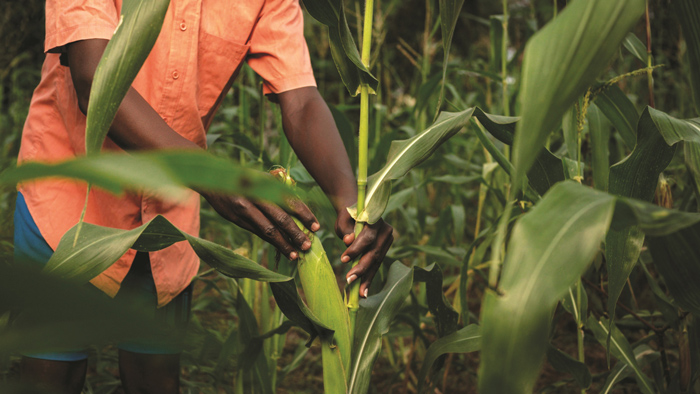December 2022
| PIETMAN BOTHA, INDEPENDENT AGRI- CULTURAL CONSULTANT |
 |
All crops are very sensitive to weed competition. Weeds in the young stage of the crops can easily take up to 60% of the crops’ yield and without weed control, it can be even more.
USE OF HERBICIDES
The inaccurate use of herbicides often results in ineffective weed control and crop damage. Most problems can be prevented by strictly following label prescriptions. You are compelled by law to do so, as published in the Government Gazette.
It is important to apply pre- and post-emergent herbicide. Contact your local chemical representative to help with the selection of the best herbicide range for your farm.
The application of the herbicide is critical. Make sure that the sprayer is in a good working order and that the correct spray nozzles are used. It is also very important to follow the mixing instructions of the herbicide. With the use of roundup herbicides, the correct mixing orders are critical.
With maize at this time of the year, make sure that a second herbicide application is done. This application will control the late emergence weeds. Good information is available on the Agricultural Research Council’s (ARC) website.
Sunflower
Sunflower is very sensitive to weed competition, particularly in the young stage. If weeds are not effectively controlled during the first six to eight weeks after emergence, up to 50% of the potential yield may be lost. The best control is achieved by implementing a system making use of both mechanical and chemical means.
It is important to remember that sunflower is particularly sensitive to the residual effect of Atrazine. On certain soils such as black turf, the residual effect of Atrazine can still damage sunflower two seasons later. Where sunflower is grown in rotation with maize, weed killers with a short residual action must be used on the maize.
TOP DRESSING OF CROPS
It is very important to make sure that the crops have sufficient fertiliser available at the right growing stage of the crop. For maize plants, all the fertilisers must be available at the eight-leaf stage. This is not when the plant will use the fertiliser, but it is when the plant determines the yield potential. Make sure that at least 15 kg of nitrogen is applied for every expected ton of maize. It will also help to apply potassium but discuss it with your representative.
With the top dressing, a shortage in fertiliser can be corrected. Make use of the fertiliser representatives to determine if extra fertiliser must be applied. To calculate the yield potential of the crop, it is important to take into account the weather forecasts for the rest of the season and compare it to the fertiliser already applied. If the yield is better than expected, apply a little bit more or if the yield expectation is lower, do not apply.
However, it does not matter what the decision is – just make sure that you understand the consequences, as too much fertiliser is just as harmful as too little fertiliser.
For sunflower, it makes sense to apply the nitrogen as late as possible. Make sure that for sandy loam soil, 10 kg nitrogen per ton yield is available. The crop will use this nitrogen to fill the seeds and not to produce a big plant. For soils with about 40 mg/kg potassium in the soil, make sure that at least 10 kg potassium per ton yield is available.
It makes sense to discuss your fertilisation strategy with your fertiliser representative.

Publication: December 2022
Section: Pula/Imvula